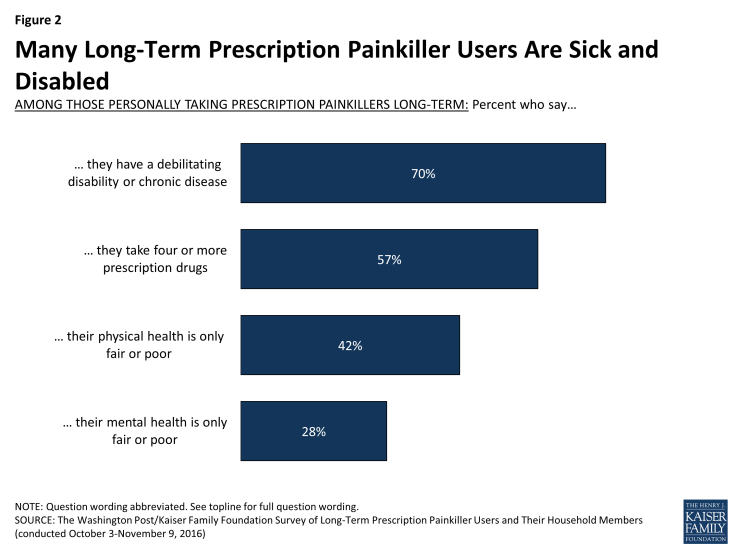The Washington Post/Kaiser Family Foundation Survey of Long-Term Prescription Painkiller Users and Their Household Members
Section 1: Views and Experiences of Long-Term Users of Prescription Painkillers
Why Did They Start Taking Strong Prescription Painkillers?
The vast majority of those taking strong prescription painkillers for two months or more report starting them with a prescription from a doctor (97 percent). More than four in ten of long-term users say they started taking them for chronic pain (44 percent), while 25 percent say they started due to pain after a surgery and another 25 percent say they started for pain after an accident or injury. Very few say they initially got the painkillers some way other than a doctor (3 percent) or that they started for recreational use (3 percent).
Many have been taking the painkillers for quite some time. Half (52 percent) of those personally using prescription painkillers say they have taken them for two years or more, but there are big differences depending on if they are still taking them or not. Most of those who say they no longer take them say they took them for 6 months or less (48 percent) and that they started them for pain after surgery (34 percent) or an accident or injury (27 percent). Seven in ten of those currently taking them have been on them for two years or more, and most started taking them for chronic pain (55 percent).
| Table 1: Length of Use and Reason for Starting Varies by Current Usage | ||||
| AMONG THOSE PERSONALLY USING PRESCRIPTION PAINKILLLERS LONG-TERM: | Total | Currently taking prescription painkillers (55%) | No longer taking prescription painkillers (45%) | |
| How long (have you been taking/did you take) these painkillers? | ||||
| 6 months or less | 28% | 12% | 48% | |
| More than 6 months but less than 1 year | 7 | 4 | 10 | |
| At least 1 year but less than 2 years | 13 | 14 | 12 | |
| 2 years or more | 52 | 70 | 30 | |
| Which of the following comes closest to the reason you began taking painkillers? | ||||
| Pain after surgery | 25% | 18% | 34% | |
| Pain after an accident or injury | 25 | 23 | 27 | |
| Chronic pain | 44 | 55 | 32 | |
| Recreational use | 3 | 2 | 4 | |
| NOTE: Started for some other reason (vol.) and Don’t know/Refused responses not shown. | ||||
Those no longer personally taking them point to a number of different reasons why they stopped, including that they no longer needed them for pain (60 percent of those not currently taking them), they were worried about becoming addicted (50 percent), they didn’t like the side effects (45 percent), and their prescription ended (34 percent).
Reasons for Taking Prescription Painkillers
While about nine in ten long-term prescription painkiller users report that relieving physical pain is a ‘major reason’ why they take the painkillers, some report taking the painkillers for other reasons as well. One in five say a major reason they take them is “for fun or to get high,” followed by 14 percent who say “to deal with day-to-day stress” and 10 percent who say “to relax or relieve tension.”
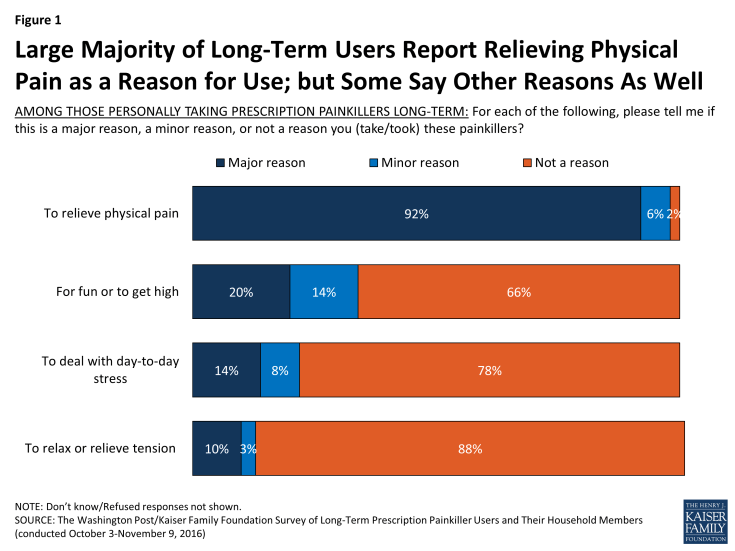
Figure 1: Large Majority of Long-Term Users Report Relieving Physical Pain as a Reason for Use; but Some Say Other Reasons As Well
Many Users Report a Disability and Multiple Prescriptions
Many personally taking prescription painkillers report being sick and disabled, such as saying they have a debilitating disability or chronic disease (70 percent) or that their physical health is only fair or poor (42 percent). More than half (57 percent) also say they take four or more prescription drugs, including 32 percent who report taking seven or more. These shares are significantly larger than for the general public. For example, 19 percent of the public reports having a chronic disease or disability1 and 18 percent say they are in fair or poor health.2
Compared to the general public, long-term users skew middle aged (59 percent between 40-64 versus 43 percent). Relatively few long-term users report working full-time (23 percent) or part time (8 percent) with more long-term users saying they are on disability (33 percent) or retired (20 percent). In comparison, six in ten of the general public report being employed, 18 percent say they’re retired, and 7 percent say they are on disability and can’t work.3
Interactions with Doctors
Most personally taking prescription painkillers long-term report that when their doctor first prescribed these medications, their doctor talked to them about:
- avoiding alcohol or certain medications while taking painkillers (78 percent);
- possible side effects associated with these painkillers (70 percent);
- keeping the medications in a safe place so they’re not misused by others (68 percent);
- the possibility of addiction or dependence (65 percent); and
- other ways to manage pain besides these painkillers (62 percent).
On the other hand, 61 percent say there was no discussion about a plan for getting off the painkillers when the doctor first prescribed them, while a third (33 percent) say there was.
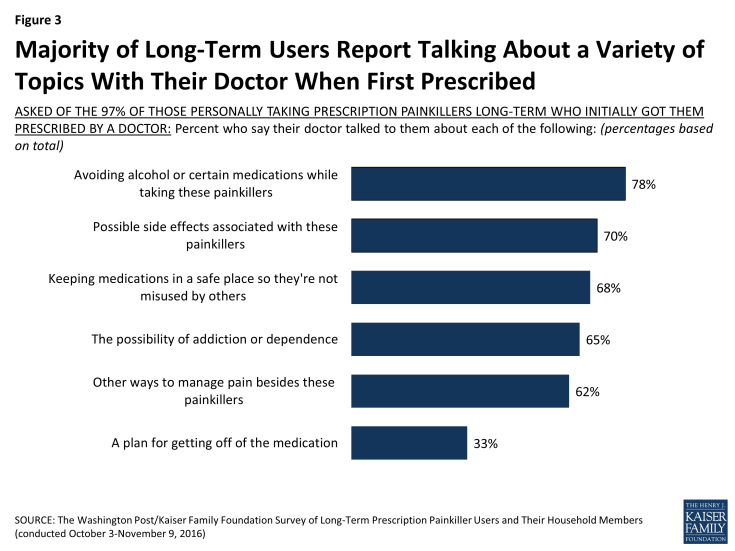
Figure 3: Majority of Long-Term Users Report Talking About a Variety of Topics With Their Doctor When First Prescribed
In addition, 75 percent of long-term prescription painkiller users say they think their doctor provided enough information on the risk of addiction and other side effects associated with prescription painkillers. Still, one in five (19 percent) say their doctor did not provide enough information. For the most part, long-term users say that their doctor has not changed their dose (56 percent) or how often they take them (71 percent) since they started taking them. However, about two in ten (21 percent) say a doctor has increased their dose, and one in ten (10 percent) say their doctor has told them to take them more frequently.
Impact on Life
Overall, long-term users report mostly positive effects of using painkillers. Virtually all long-term users (92 percent) say the painkillers have reduced their pain at least somewhat well. And, a majority of long-term prescription painkiller users (57 percent) say their use of the medications has made their quality of life better, particularly those who say they started the painkillers for chronic pain (69 percent), but one in six (16 percent) say it has made it worse.
In terms of the impact their use of the painkillers has had on certain aspects of their lives, most long-term users report that their use of the drugs has had no impact on their finances (74 percent) however more say the impact has been negative than say positive (17 percent versus 8 percent). But when it comes to their impact on their physical health or their ability to do their job, more say the impact has been positive than say negative (42 percent vs. 20 percent and 23 percent vs. 14 percent, respectively). Most say there has been no impact on their mental health or personal relationships, but for those that do, similar shares say the impact has been positive as say negative.
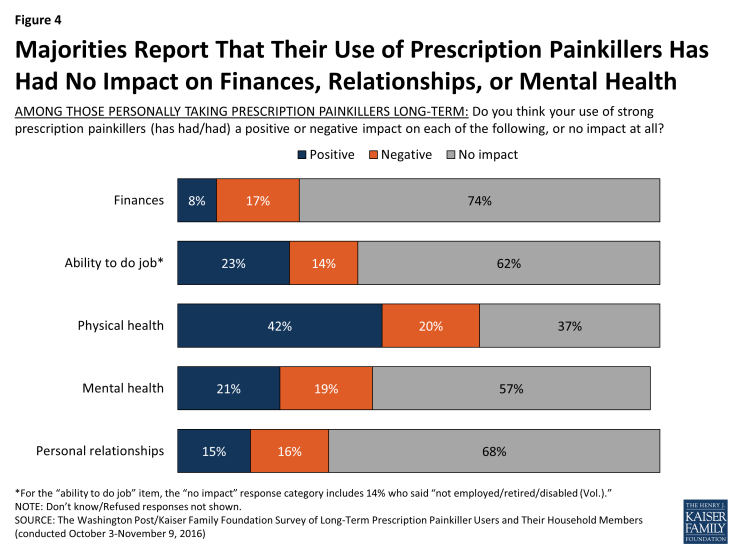
Figure 4: Majorities Report That Their Use of Prescription Painkillers Has Had No Impact on Finances, Relationships, or Mental Health
Reports of Addiction, Dependence and Misuse
In addition to some reporting negative impacts on their lives, 34 percent report that they think they are or were physically dependent or addicted to the painkillers (this group is profiled in Section 2). Few (9 percent) say they have sought treatment for addiction and 2 percent say they have considered seeking addiction treatment. Additionally, a quarter (26 percent) say that a friend or family member has suggested they stop taking them.
There are also a number of indications of misuse among long-term users, including 17 percent who say they have taken prescription painkillers that were not prescribed specifically for them since starting on painkillers and 14 percent who say they have given their painkillers to a family member or friend. In addition, 20 percent say they have known or suspected someone was using, taking, or selling their painkillers, rising to nearly three in ten (28 percent) of long-term users in rural areas, compared to 10 percent of those in urban areas.
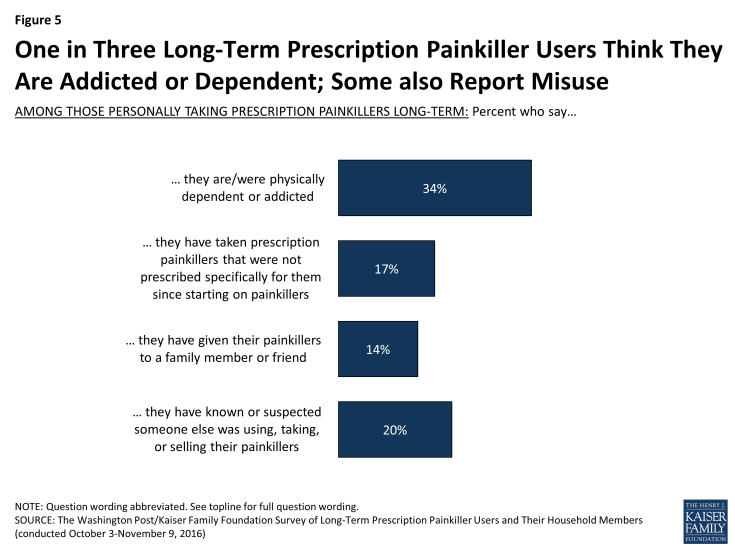
Figure 5: One in Three Long-Term Prescription Painkiller Users Think They Are Addicted or Dependent; Some also Report Misuse
Risky Use
Many are taking other drugs that could put them more at risk for an overdose or other complications. About half (52 percent) of long-term users say that while taking their prescription painkillers they were taking other prescription medications for anxiety, depression, or sleep problems. And, 18 percent say that while taking their prescription painkillers they have consumed alcohol.
Perceptions of Risk
Two-thirds (68 percent) of those personally using prescription painkillers long-term say that the benefits of pain relief outweigh the risk of addiction. However, nearly half (46 percent) acknowledge that using them makes a person more likely to use heroin or other illegal drugs and 40 percent say prescription painkillers are as addictive as heroin.
Compared to those personally using strong painkillers, the general public is more split on the risks and benefits of using prescription painkillers for more than a week, and are more likely than those personally using to say prescription painkiller use makes a person more likely to use heroin or other illegal drugs or that prescription painkillers and heroin are equally addictive.
| Table 2: Long-Term Users’ and General Public’s Perceptions of Prescription Painkiller Risk | ||
| Personally taking prescription painkillers long-term | U.S. Adults | |
| Which comes closer to your view on using prescription painkillers for more than a week to treat pain? | ||
| The risk of addiction outweighs the benefits of pain relief | 25% | 47% |
| The benefits of pain relief outweigh the risk of addiction | 68 | 44 |
| Don’t know/Refused | 6 | 9 |
| Do you think prescription painkiller abuse makes a person more likely or less likely to use heroin or other illegal drugs, or do you think it doesn’t make much of a difference? | ||
| More likely | 46% | 58% |
| Less likely | 4 | 2 |
| Doesn’t make much of a difference | 43 | 36 |
| Don’t know/Refused | 7 | 4 |
| Which do you think is more addictive, prescription painkillers or heroin, or do you think they are about equally addictive? | ||
| Prescription painkillers | 3% | 6% |
| Heroin | 45 | 29 |
| Equally addictive | 40 | 60 |
| Don’t know/Refused | 12 | 6 |
| SOURCE: National comparison of U.S. adults from Kaiser Health Tracking Poll (conducted November 15-21, 2016) | ||
Access to Prescription Painkillers: Users’ Troubles and Concerns
Reports of Problems Accessing Painkillers
Some of those personally using prescription painkillers long-term report trouble accessing them, including trouble affording them (18 percent), getting a pharmacy to fill a prescription (16 percent), getting refill from doctors (16 percent), and getting insurance to cover it (12 percent). Overall, 41 percent of long-term users report at least one of these issues. With the recent attention prescription painkillers have received in light of the epidemic of abuse and overdose, two-thirds (67 percent) of long-term users say they are concerned that efforts to decrease the number of people abusing prescription painkillers will make it more difficult for them to access them; a share that increases to nearly eight in ten (78 percent) of those who started to treat chronic pain, including 56 percent who say they are very concerned.
Six in ten (60 percent) long-term users say it is easy for people to get painkillers that were not prescribed to them, while a similar share (59 percent) say it is difficult for people who need the drugs for medical purposes to get them. Majorities of the general public say it is easy to get drugs in both scenarios, although a larger share say it’s easy for people to get drugs not prescribed to them than say the same about those who need them for medical purposes.
| Table 3: Perceptions of Prescription Painkiller Accessibility Among Long-Term Users and the General Public | ||
| How easy or difficult do you think it is for people… | Personally taking prescription painkillers long-term | U.S. Adults |
| … to get access to prescription painkillers that were NOT prescribed to them? | ||
| Easy (NET) | 60% | 71% |
| Very easy | 36 | 37 |
| Somewhat easy | 24 | 33 |
| Difficult (NET) | 27 | 27 |
| Somewhat difficult | 14 | 17 |
| Very difficult | 14 | 10 |
| Don’t know/Refused | 13 | 3 |
| … who need prescription painkillers for medical purposes to get access to them? | ||
| Easy (NET) | 36% | 62% |
| Very easy | 16 | 28 |
| Somewhat easy | 20 | 34 |
| Difficult (NET) | 59 | 35 |
| Somewhat difficult | 30 | 24 |
| Very difficult | 29 | 12 |
| Don’t know/Refused | 5 | 3 |
| SOURCE: National comparison of U.S. adults from Kaiser Health Tracking Poll (conducted November 15-21, 2016) | ||
Side Effects
Prescription painkillers are known for causing certain side effects, and among long-term users, reports of side effects are quite common. Seven in ten (72 percent) of those personally using prescription painkillers report experiencing at least one of the following side effects: constipation (55 percent), indigestion, dry mouth, or nausea (50 percent) or breathing problems (15 percent). While many have experienced side effects, half (50 percent) say they have not taken medications specifically to treat side effects. However, one in five (21 percent) say they have.
Half (49 percent) of those personally using painkillers say they are at least somewhat concerned about side effects, including one in four (27 percent) who say they are very concerned, and nearly half of those who no longer take the painkillers say that the side effects are at least a minor reason they stopped (45 percent, or 20 percent of long-term users overall). Still, large majorities say their doctor discussed possible side effects when they initially prescribed the painkillers (70 percent) and feel their doctor provided enough information about the risk of addiction and other side effects (75 percent).
Views and Experiences from Household Members of Prescription Painkiller Users
Interviews with people living in the same household as a long-term prescription painkiller user provide another angle of insight into this group. For most, the user is a spouse (43 percent), followed by a parent (25 percent), a child (9 percent), or some other person in their household (21 percent).
Household Members Report Negative Impacts, Concerned About Addiction
In general, household members are more likely to report issues with addiction or dependence and negative experiences than those who are personally taking the painkillers. For example, 54 percent of household members say they think the person is or was addicted or dependent and 43 percent report that a friend or family member has suggested the user stop.
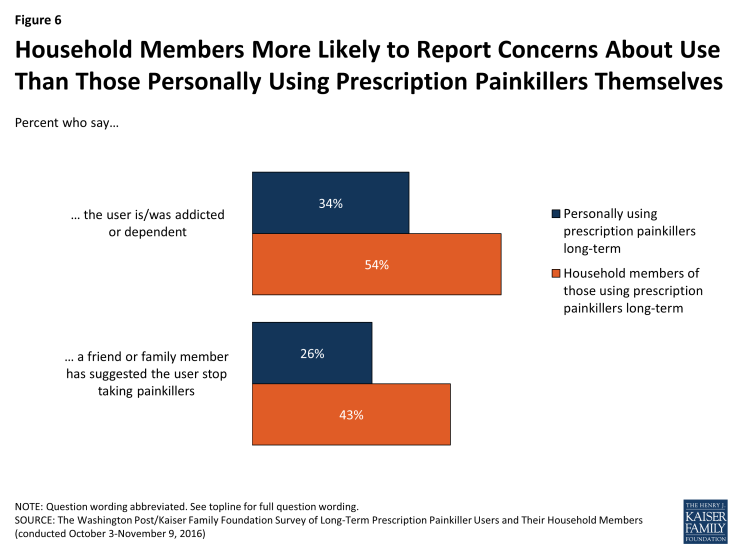
Figure 6: Household Members More Likely to Report Concerns About Use Than Those Personally Using Prescription Painkillers Themselves
In addition, household members are roughly twice as likely as those personally using prescription painkillers to say the drugs have had a negative impact on the user’s finances (37 percent versus 17 percent), the user’s personal relationships (34 percent versus 16 percent), the user’s physical health (39 percent versus 20 percent), the user’s mental health (39 percent versus 19 percent), and the user’s ability to do their job (27 percent versus 14 percent).

